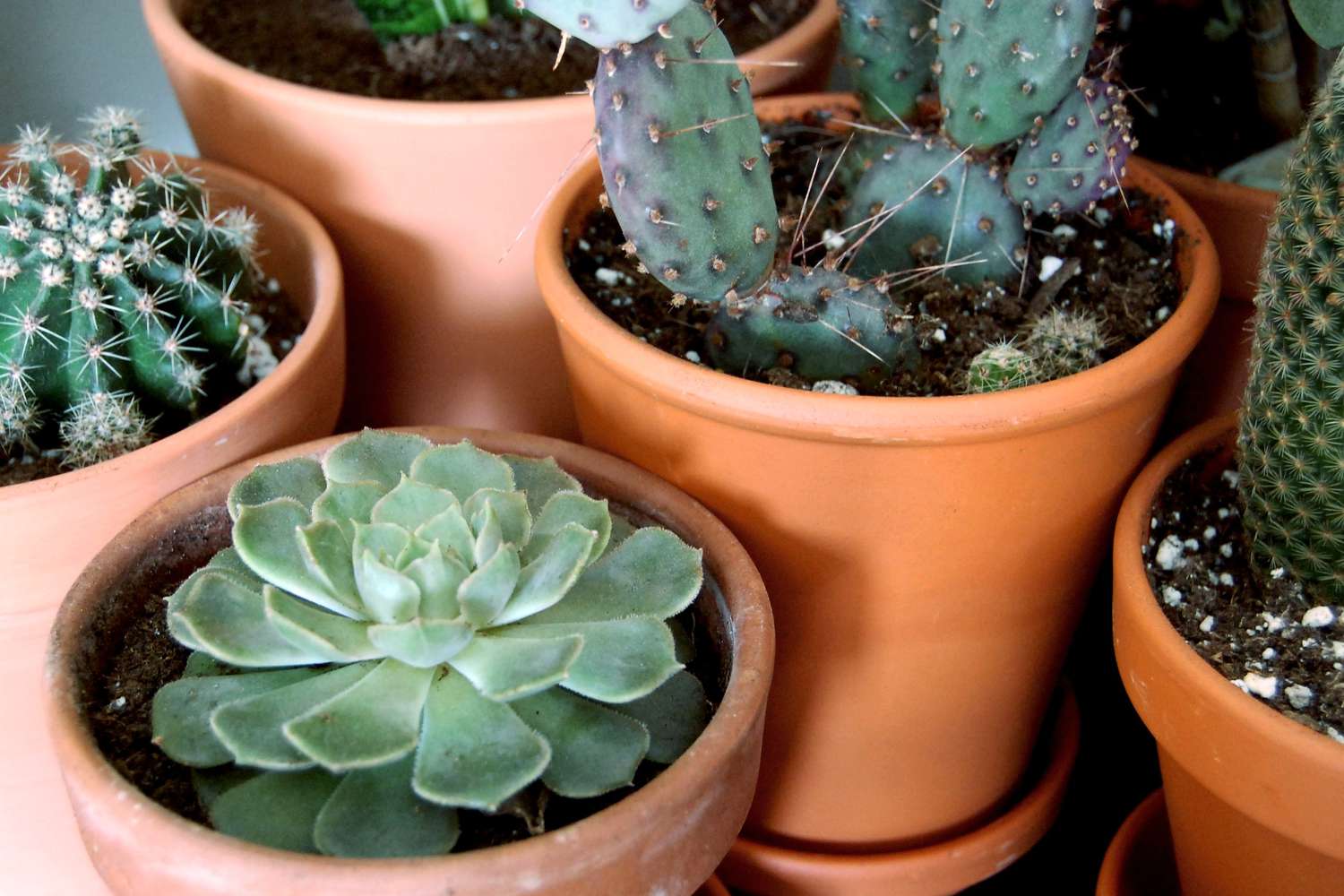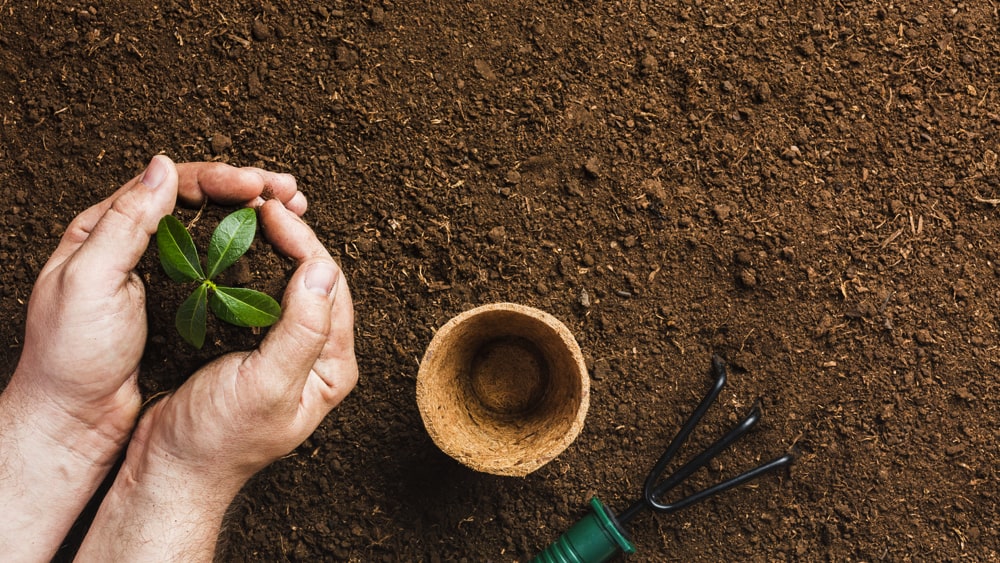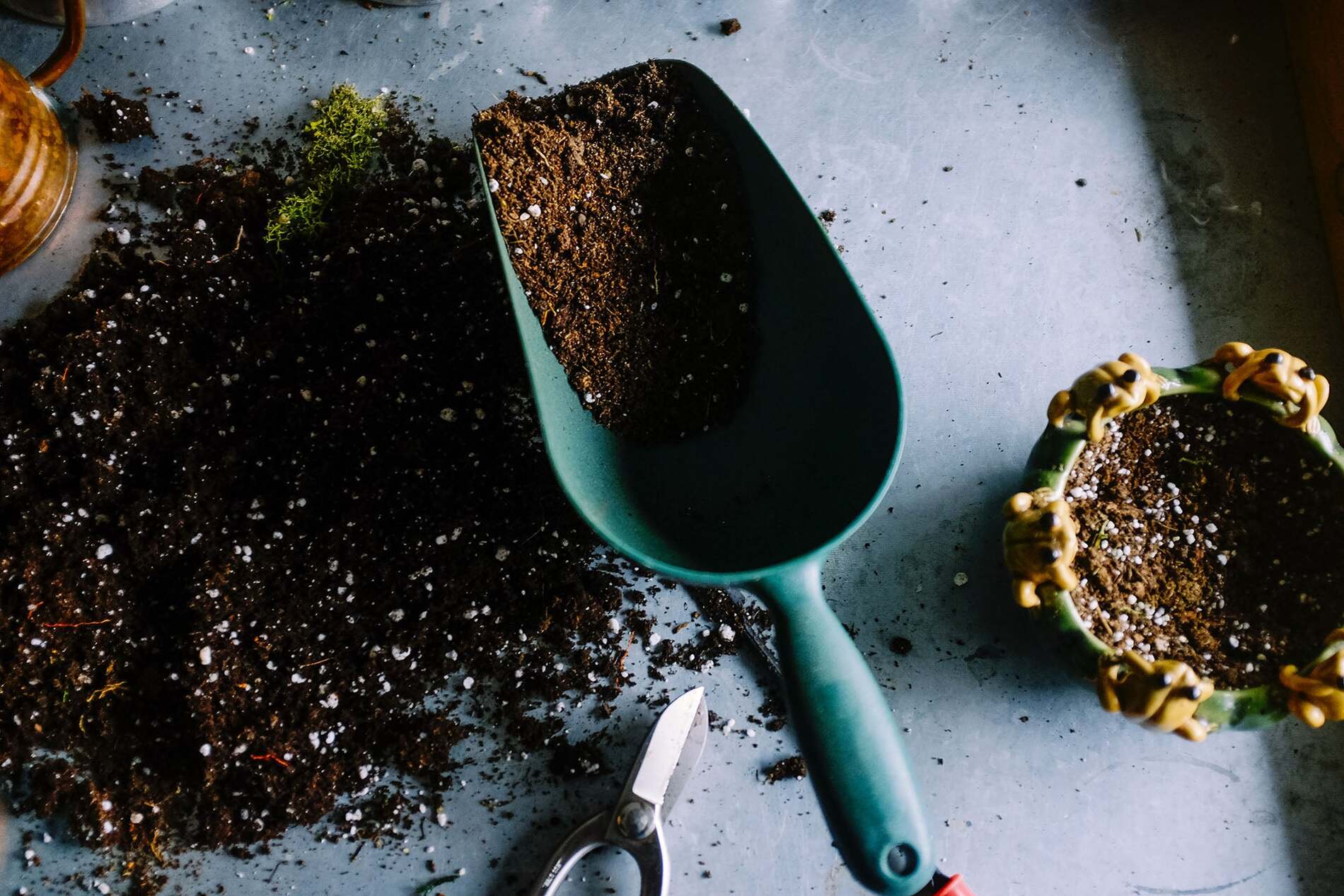Home>Gardening News and Trends>Latest News>What Is The Difference Between Cactus And Succulents


Latest News
What Is The Difference Between Cactus And Succulents
Published: December 27, 2023
Discover the latest news on the difference between cactus and succulents. Learn about their unique characteristics and how to care for them. Explore our comprehensive guide now!
(Many of the links in this article redirect to a specific reviewed product. Your purchase of these products through affiliate links helps to generate commission for Chicagolandgardening.com, at no extra cost. Learn more)
Table of Contents
Introduction
Introduction
When it comes to the realm of plants, the terms "cactus" and "succulents" often intertwine, leading to confusion about their distinctions. Both are renowned for their ability to thrive in arid environments and are popular choices for indoor decor due to their low-maintenance nature. However, despite their similarities, cacti and succulents possess unique characteristics that set them apart. In this comprehensive exploration, we will delve into the defining features of cacti and succulents, unraveling the mystery behind their individuality.
The allure of these plants lies in their resilience and adaptability, making them fascinating subjects for both seasoned horticulturists and budding enthusiasts. By understanding the nuances between cacti and succulents, individuals can cultivate a deeper appreciation for these remarkable specimens. Whether you are a green thumb aficionado or simply intrigued by the natural world, this exploration will shed light on the captivating realm of cacti and succulents, illuminating their distinct traits and the optimal care required for their flourishing. Let's embark on this enlightening journey to uncover the remarkable disparities between cacti and succulents, demystifying their allure and unveiling their individual charm.
Definition of Cactus
Before delving into the intricacies of cacti, it is essential to grasp the fundamental definition of these extraordinary plants. Cacti belong to the family Cactaceae and are renowned for their capacity to thrive in arid and semi-arid regions, showcasing a remarkable ability to store water in their fleshy stems, roots, or leaves. This unique adaptation enables cacti to endure prolonged periods of drought, making them well-suited for desert environments and drought-prone areas.
Cacti are distinguished by their distinctive features, including areoles, which are small, round cushion-like structures from which spines, flowers, and new stems emerge. The presence of these areoles sets cacti apart from other succulents, serving as a defining characteristic of this resilient plant family. Furthermore, the majority of cacti species boast spines or thorns, which not only act as a deterrent against herbivores but also provide shade, reduce water loss, and offer protection against extreme temperatures.
One of the most intriguing aspects of cacti is their remarkable diversity, with over 1,700 species exhibiting a wide array of shapes, sizes, and unique adaptations. From the towering saguaro cactus of the Sonoran Desert to the charming prickly pear cactus adorned with vibrant fruits, each species contributes to the rich tapestry of the cactus family, showcasing nature’s boundless creativity.
Furthermore, cacti are revered for their breathtaking floral displays, with many species producing vibrant, ornate flowers that bloom in a kaleidoscope of colors. These blooms often emerge from the areoles and serve as a testament to the resilience and beauty of these remarkable plants.
Definition of Succulents
Delving into the realm of succulents unveils a diverse and captivating array of plants celebrated for their ability to thrive in arid and semi-arid environments. Succulents encompass a broad spectrum of plant species characterized by their capacity to store water in their fleshy leaves, stems, or roots, enabling them to endure prolonged periods of drought. This unique adaptation equips succulents to flourish in a myriad of habitats, ranging from deserts and steppes to rocky outcrops and coastal regions.
One of the defining features of succulents is their remarkable diversity, encompassing a vast assortment of plant families, including but not limited to Aloe, Echeveria, Haworthia, and Sedum. Each succulent genus and species showcases distinctive traits, from the striking rosette formations of Echeveria to the architectural elegance of Sansevieria, commonly known as snake plants.
Furthermore, succulents are revered for their visually striking appearance, often adorned with captivating foliage in an array of shapes, textures, and hues. From the velvety leaves of Kalanchoe to the intricate patterns adorning the leaves of Crassula, succulents captivate the senses with their aesthetic allure, making them popular choices for both indoor and outdoor cultivation.
Moreover, succulents are prized for their low-maintenance nature, making them ideal companions for both seasoned gardeners and novices alike. Their ability to thrive in a variety of growing conditions, coupled with their resilience in the face of environmental challenges, renders succulents as versatile and adaptable additions to diverse landscapes.
As we embark on this exploration of succulents, we will uncover the enchanting world of these resilient plants, delving into their unique adaptations, captivating diversity, and the optimal care required for their flourishing. From the architectural elegance of agave plants to the whimsical charm of lithops, succulents beckon us to embrace their remarkable resilience and captivating beauty.
Physical Differences
When examining the physical disparities between cacti and succulents, several key distinctions come to light, shedding light on their unique characteristics and adaptations.
Cacti are renowned for their distinctive areoles, which serve as the hallmark feature distinguishing them from other succulents. These small, cushion-like structures are where spines, flowers, and new stems emerge, underscoring the defining trait of cacti. Additionally, the majority of cacti species are equipped with spines or thorns, which not only provide protection against herbivores but also aid in reducing water loss and shielding the plant from extreme temperatures. This feature sets cacti apart from other succulents, contributing to their iconic appearance and resilience in harsh environments.
Conversely, succulents encompass a diverse array of plant families, each showcasing unique physical attributes. While some succulents may bear a resemblance to cacti due to their fleshy, water-storing leaves, they lack the defining areoles and spines characteristic of cacti. Instead, succulents exhibit an assortment of leaf shapes, textures, and arrangements, ranging from the stacked rosettes of Echeveria to the cylindrical columns of Senecio mandraliscae. This diversity of physical traits underscores the versatility and adaptability of succulents, showcasing an array of captivating forms that contribute to their visual allure.
Furthermore, the flowering habits of cacti and succulents offer insight into their physical disparities. While many cacti species are celebrated for their vibrant, ornate flowers that bloom from the areoles, succulents also produce an impressive array of blooms, each contributing to the visual tapestry of these resilient plants. The diversity of floral displays among cacti and succulents reflects their distinct evolutionary paths and ecological niches, further highlighting their physical disparities.
As we unravel the physical disparities between cacti and succulents, it becomes evident that while both plant groups share a capacity for water storage and resilience in arid environments, their unique physical traits and adaptations set them apart, contributing to their individual charm and allure.
Growing Conditions
Understanding the optimal growing conditions for cacti and succulents is essential for nurturing these resilient plants and ensuring their flourishing in diverse environments. While both cacti and succulents share a capacity for water storage and resilience in arid habitats, their specific requirements for growth and cultivation exhibit nuanced disparities.
Cacti, owing to their adaptation to desert environments, thrive in well-draining soil with minimal organic matter. This allows excess water to swiftly drain away, preventing waterlogged conditions that could jeopardize the health of these plants. Furthermore, cacti necessitate ample sunlight to thrive, typically requiring at least six hours of direct sunlight per day to support robust growth and vibrant flowering. In regions with harsh winters, cacti may benefit from protection against frost to safeguard their delicate tissues from damage.
On the other hand, succulents showcase a remarkable adaptability to a diverse range of growing conditions, from desert landscapes to temperate climates. While they also thrive in well-draining soil, succulents may tolerate a slightly higher organic content in their growing medium compared to cacti. Additionally, succulents exhibit varying light preferences, with some species thriving in bright, direct sunlight while others thrive in partial shade. Understanding the specific light requirements of succulent species is crucial for optimizing their growth and ensuring their vitality.
Moreover, the watering needs of cacti and succulents differ, with cacti typically requiring infrequent but thorough watering, allowing the soil to dry out completely between waterings. In contrast, succulents may necessitate more frequent watering during their active growing season, with reduced watering during dormancy to prevent waterlogged conditions that could compromise their health.
By comprehending the distinct growing conditions favored by cacti and succulents, individuals can cultivate these remarkable plants with precision, providing them with the optimal environment to thrive and display their captivating resilience in diverse settings.
Flowering
The flowering habits of cacti and succulents offer a captivating glimpse into the remarkable diversity and beauty of these resilient plants. Both cacti and succulents are celebrated for their striking floral displays, each contributing to the visual allure and ecological significance of these extraordinary specimens.
Cacti are renowned for their vibrant and ornate flowers, which often emerge from the areoles, showcasing a kaleidoscope of colors and intricate patterns. These blooms serve as a testament to the resilience and adaptability of cacti, with many species producing flowers that captivate the senses and attract pollinators. The flowering period of cacti varies among species, with some producing blooms that last for a single day while others boast an extended flowering season, punctuating the arid landscapes with bursts of color and vitality.
Similarly, succulents exhibit a diverse array of floral displays, with many species producing captivating blooms that adorn their fleshy stems and foliage. From the delicate, star-shaped flowers of Haworthia to the vibrant, trumpet-like blooms of Echeveria, succulents contribute to the visual tapestry of their habitats with an array of colors and forms. The flowering habits of succulents reflect their ecological adaptations and the intricate relationships they share with pollinators, underscoring their vital role in supporting biodiversity and ecosystem health.
Furthermore, the timing and duration of flowering among cacti and succulents offer insight into their ecological strategies and the environmental cues that influence their reproductive cycles. Understanding the flowering habits of these plants not only enhances our appreciation for their aesthetic appeal but also provides valuable insights into their ecological significance and the intricate web of life they support.
As we marvel at the floral displays of cacti and succulents, we are reminded of the resilience and adaptability of these remarkable plants, each bloom serving as a testament to their capacity to thrive in arid environments and captivate the senses with their enduring beauty.
Conclusion
As we conclude our exploration of cacti and succulents, we have unveiled the captivating distinctions and shared traits that define these resilient plants, shedding light on their individual charm and ecological significance. From the iconic features of cacti, including their distinctive areoles and spines, to the diverse array of succulents with their striking foliage and captivating blooms, these plants beckon us to embrace their remarkable resilience and adaptability.
While cacti and succulents share a capacity for water storage and thriving in arid environments, their unique adaptations and physical disparities underscore their individuality and ecological diversity. The remarkable floral displays of cacti and succulents serve as a testament to their enduring beauty and vital role in supporting biodiversity, highlighting their ecological significance beyond their ornamental appeal.
Understanding the optimal growing conditions for cacti and succulents is crucial for nurturing these remarkable plants and ensuring their flourishing in diverse environments. By providing well-draining soil, ample sunlight, and tailored watering practices, individuals can cultivate these resilient plants with precision, fostering their vitality and captivating allure.
As we reflect on the enchanting realm of cacti and succulents, we are reminded of the profound resilience and adaptability exhibited by these plants, serving as a source of inspiration and natural wonder. Whether adorning desert landscapes, brightening indoor spaces, or contributing to biodiverse ecosystems, cacti and succulents invite us to embrace their enduring beauty and ecological significance, enriching our lives with their remarkable presence.
So, whether you are a seasoned horticulturist, an aspiring plant enthusiast, or simply captivated by the wonders of the natural world, the realm of cacti and succulents offers a wealth of beauty, resilience, and ecological intrigue, beckoning us to cultivate a deeper appreciation for these extraordinary plants and the vital role they play in our shared ecosystem.








